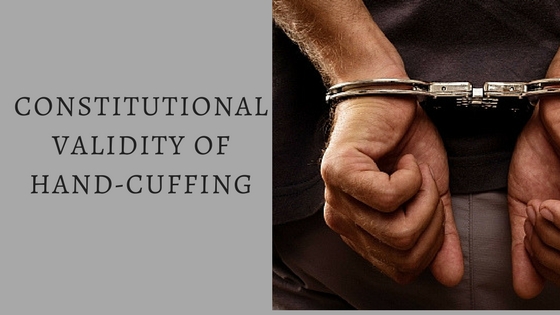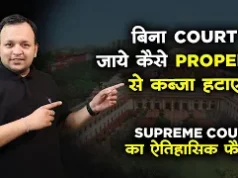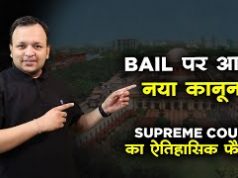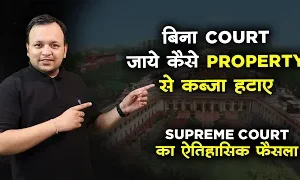Aapka Consultant Judgment Series- In this series, we are providing case analysis of Landmark Judgments of Hon’ble Supreme Court of India.
Prem Shankar Shukla v. Delhi Administration
AIR 1980 SC 1535: (1980) 3 SCC 526
JUDGES: O. Chinnappa Reddy, R.S. Pathak and V.R. Krishna Iyer
Date of Decision: 29-04-1980
FACTS:-
The facts were that the petitioner was an under-trial prisoner in Tihar Jail. He was required to be taken to the Magistrate court from jail and back periodically in relation to certain cases pending against him. The Trial court directed the concerned officer that handcuffs should not be used while taking the petitioner to the court and back unless it was so warranted. But hand-cuffing was forced on him by the escorting officers. Thereafter, he sent a telegram to one of the Judge of the Supreme Court on the basis of which the present habeas corpus petition has been entertained by the court.
ISSUE:-
Whether hand-cuffing is constitutionally valid or not?
JUDGMENT:-
The Hon’ble Supreme Court has opined that “handcuffs are prima facie inhuman, unreasonable, and at first blush arbitrary without fair procedure and objective monitoring”. The court has recognized the need to protect the prisoner from fleeing but the hand-cuffing is not compulsorily required. Using of handcuffs and chains on prisoners violates the basic human dignity of a person which is guaranteed by the Constitution of India. This practice does not stand the test of Article 14, 19 and 21 of the Constitution. It was observed that ‘to bind a man hand-and-foot, fetter his limbs with hoops of steel, shuffle him along in the streets and stand him for hours in the courts is to torture him, defile his dignity, vulgarise society and foul the soul of our constitutional culture’. Even the orders from the superior are not considered to be valid for hand-cuffing a person as constitutional rights cannot be suspended under the grab of the orders given by the superiors for hand-cuffing a prisoner unless it is shown that there is material, sufficiently stringent, to satisfy that the prisoner is a dangerous character and the escorting party cannot control the person except by hand-cuffing.
There must be a reasonable ground to believe that the prisoner is so dangerous that he cannot be put except hand-cuffing. An absent fair procedure and objective monitoring to inflict ‘irons or chains’ is to resort to zoological strategies and is foul of Article 21 of the Constitution. The minimum freedom of movement, which a prisoner is entitled to under Article 19 of the Constitution, could not be curtailed by applying handcuffs. This must be the last resort when there are no other ways for ensuring security. Even in exceptional circumstances when the handcuffs have been put to the prisoner then the escorting officer must record the reasons for doing so.
The directions given the court regarding handcuffs were: –
- Handcuffs are to be used only if a person is: a) involved in serious non-bailable offences, has been previously convicted of a crime; and/or b) is of desperate character- violent, disorderly or obstructive; and/or c) is likely to commit suicide; and/or d) is likely to attempt escape.
- The reasons why handcuffs have been used must be clearly mentioned in the Daily Diary Report. They must also be shown to the court.
- Once an arrested person is produced before the court, the escorting officer must take the court’s permission before handcuffing her/him to and fro from the court to the place of custody.
- The magistrate before whom an arrested person is produced must inquire whether handcuffs or fetters have been used. If the answer is yes, the officer concerned must give an explanation.
HELD:-
The Court struck down the provisions of Punjab Police Rules which discriminates between rich and poor prisoners in determining that who would be hand-cuffed. The Court held that in the absence of any recording by the escorting officer that why the prisoner is put under the handcuffs, the whole procedure of hand-cuffing is in violation of Article 21 of the Constitution of India. Use of handcuffs, chains or ropes to bind prisoners is an inhuman treatment.
To Get Legal Opinion from Advocates/ Legal Experts, Please click here
To Get Legal Opinion from Retired Hon’ble Judges, Please click here












